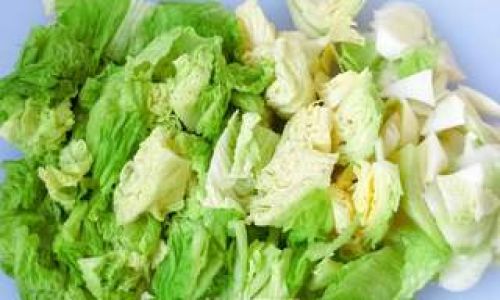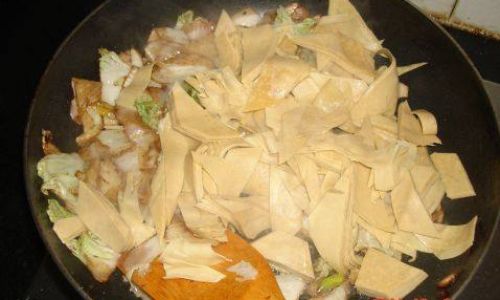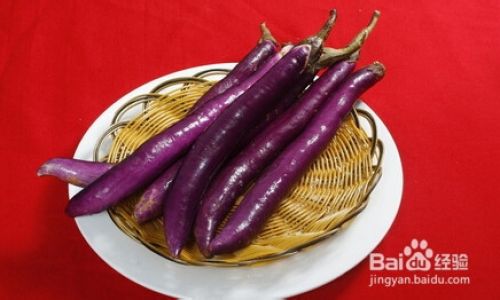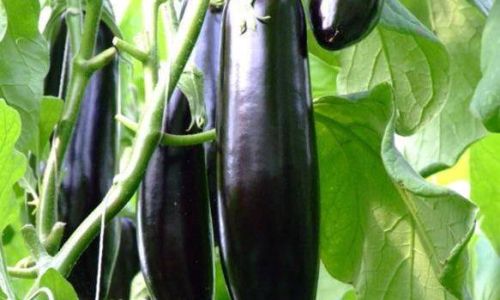Table of content
Dried Chinese cabbage, often referred to as dried bai cai or meigan cai, is a staple ingredient in many Asian cuisines, prized for its unique texture and ability to absorb flavors. When paired with tofu—a versatile, protein-rich soy product—it creates a dish that is both nutritious and deeply satisfying. This article will guide you through the process of preparing a classic stir-fry featuring these two ingredients, offering tips, techniques, and cultural insights to help you achieve restaurant-quality results at home.

Understanding the Ingredients
Dried Chinese Cabbage
Dried Chinese cabbage is made by sun-drying or air-drying fresh cabbage leaves until they become leathery and concentrated in flavor. This preservation method intensifies the cabbage’s natural sweetness and umami notes, while also giving it a chewy texture when rehydrated. It is commonly used in soups, stews, and stir-fries, as it readily absorbs sauces and seasonings.
Tofu
Tofu, or bean curd, is made from soy milk coagulated into solid blocks. It comes in various textures, from silken (soft) to extra-firm. For stir-fries, firm or extra-firm tofu is recommended, as it holds its shape during cooking and develops a crispy exterior when pan-fried. Tofu is an excellent source of plant-based protein, iron, and calcium, making it a staple in vegetarian and vegan diets.

Supporting Ingredients
To elevate the dish, you’ll need aromatics like garlic and ginger, vegetables such as carrots or mushrooms, and a savory sauce base typically made from soy sauce, oyster sauce, and sesame oil. Optional additions like chili flakes or fermented black beans can add depth, while cornstarch thickens the sauce for a glossy finish.
Preparation: The Foundation of Flavor
Rehydrating Dried Cabbage
- Step 1: Place the dried cabbage in a large bowl and cover it with warm water. Let it soak for 20–30 minutes, or until fully rehydrated and pliable.
- Step 2: Drain the cabbage and rinse it under cold water to remove excess salt or impurities. Gently squeeze out moisture, then chop it into bite-sized pieces.
Preparing the Tofu
- Step 1: Remove the tofu from its packaging and wrap it in paper towels or a clean kitchen cloth. Place a heavy object (like a skillet or a plate) on top to press out excess liquid for 15–20 minutes. This step ensures the tofu doesn’t become soggy during cooking.
- Step 2: Cut the pressed tofu into cubes or slabs. For added texture, lightly coat the pieces in cornstarch before frying.
Mise en Place
- Mince garlic and ginger.
- Slice carrots into thin matchsticks or julienne bell peppers for color.
- Rehydrate dried mushrooms (such as shiitake) in warm water, then slice them.
- Prepare the sauce by mixing soy sauce, oyster sauce, a pinch of sugar, and a splash of water or broth.
Cooking Technique: Stir-Frying to Perfection
Heating the Wok
A well-seasoned carbon-steel wok is ideal for stir-frying, as it distributes heat evenly and retains high temperatures. If unavailable, use a large skillet. Heat the wok over medium-high heat until a drop of water evaporates instantly.

Stir-Frying Aromatics
- Add 1–2 tablespoons of cooking oil (peanut, vegetable, or sesame) to the hot wok.
- Toss in the minced garlic and ginger. Stir-fry for 30 seconds until fragrant, being careful not to burn them.
Cooking Vegetables
- Add carrots and mushrooms to the wok. Stir-fry for 2–3 minutes until slightly softened.
- Push the vegetables to one side of the wok to create a cooking “well” for the cabbage.
Adding Dried Cabbage
- Toss the rehydrated cabbage into the wok. Stir-fry for 4–5 minutes, allowing it to absorb the aromatics and develop a slight caramelization.
- If the wok becomes dry, splash in a tablespoon of water or broth to prevent sticking.
Incorporating Tofu
- Gently add the tofu cubes to the wok. Use a spatula to fold them into the mixture without breaking the tofu.
- Pour the prepared sauce over the ingredients. Stir gently to coat everything evenly.
Simmering and Thickening
- Reduce the heat to medium-low and let the mixture simmer for 3–4 minutes, allowing the flavors to meld.
- If the sauce is too thin, mix 1 teaspoon of cornstarch with 2 teaspoons of water to create a slurry. Stir this into the wok and cook until the sauce thickens.
Finishing Touches
- Drizzle with sesame oil and sprinkle with sliced green onions or toasted sesame seeds.
- Taste and adjust seasoning with salt, pepper, or a splash of rice vinegar if needed.
Serving Suggestions
This dish pairs beautifully with steamed jasmine rice, quinoa, or noodles. For a complete meal, serve it alongside a crisp cucumber salad or a bowl of miso soup. Leftovers can be stored in an airtight container in the refrigerator for up to three days, though the cabbage may soften further—a texture that some find equally delicious.
Tips for Success
- Uniformity in Cutting: Ensure all ingredients are cut to a similar size for even cooking.
- Heat Control: Maintain high heat during stir-frying to achieve a smoky, charred flavor without overcooking the vegetables.
- Tofu Handling: Use a spatula instead of tongs to avoid crumbling the tofu. For extra crispiness, pan-fry the tofu separately before adding it to the wok.
- Sauce Adjustments: Customize the sauce with ingredients like hoisin sauce, black vinegar, or chili garlic sauce to suit your taste.
- Vegetarian Variation: Substitute oyster sauce with vegetarian stir-fry sauce or mushroom-based seasoning for a plant-based dish.
Cultural Context
Dried Chinese cabbage has been a pantry staple in China for centuries, dating back to the Ming Dynasty when preservation techniques were essential for surviving harsh winters. Today, it remains a symbol of resourcefulness and culinary ingenuity. Tofu, introduced to China over 2,000 years ago, is revered for its adaptability and philosophical ties to Buddhist vegetarianism. Together, these ingredients embody the balance of simplicity and depth that defines Asian cooking.

Health Benefits
- Fiber-Rich: Dried cabbage is high in dietary fiber, aiding digestion and promoting satiety.
- Protein Powerhouse: Tofu provides all nine essential amino acids, making it a complete protein source.
- Low in Calories: This dish is ideal for weight management, as it is relatively low in fat and calories when prepared with minimal oil.
- Antioxidant Boost: Garlic and ginger contain antioxidants that support immune health.
Troubleshooting Common Issues
- Soggy Cabbage: Ensure the cabbage is thoroughly drained and stir-fried over high heat to evaporate excess moisture.
- Bland Flavor: Amplify the sauce with a touch of miso paste or a splash of Shaoxing wine.
- Mushy Tofu: Press the tofu thoroughly and avoid overcrowding the wok, which lowers the cooking temperature.
Conclusion
Cooking dried Chinese cabbage and tofu is a journey into the heart of Asian home cooking—a dance of textures, flavors, and traditions. Whether you’re a seasoned cook or a novice in the kitchen, this dish offers endless opportunities for creativity and customization. By mastering the art of rehydration, stir-frying, and sauce balancing, you’ll create a meal that honors its roots while satisfying modern palates. So grab your wok, sharpen your knife, and embark on a culinary adventure that bridges past and present, one delicious bite at a time.




0 comments